
The Open Conspiracy: Blue Prints for a World Revolution was published in 1928 by H. G. Wells, when he was 62 years old. It was revised and expanded in 1930 with the additional subtitle A Second Version of This Faith of a Modern Man Made More Explicit and Plain. In 1931 a further revised edition appeared titled What Are We to Do with Our Lives?. A final version appeared in 1933 under its original title. Many of its ideas are anticipated in Wells's 1926 novel The World of William Clissold.

The Outline of History, subtitled either "The Whole Story of Man" or "Being a Plain History of Life and Mankind", is a work by H. G. Wells chronicling the history of the world from the origin of the Earth to the First World War. It appeared in an illustrated version of 24 fortnightly installments beginning on 22 November 1919 and was published as a single volume in 1920. It sold more than two million copies, was translated into many languages, and had a considerable impact on the teaching of history in institutions of higher education. Wells modelled the Outline on the Encyclopédie of Denis Diderot.
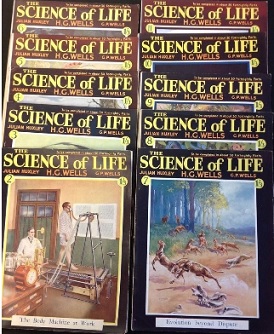
The Science of Life is a book written by H. G. Wells, Julian Huxley and G. P. Wells, published in three volumes by The Waverley Publishing Company Ltd in 1929–30, giving a popular account of all major aspects of biology as known in the 1920s. It has been called "the first modern textbook of biology" and "the best popular introduction to the biological sciences". Wells's most recent biographer notes that The Science of Life "is not quite as dated as one might suppose".
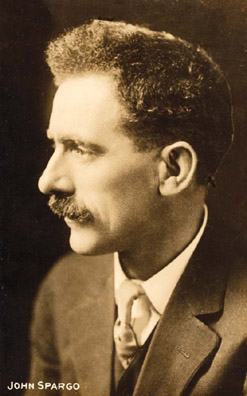
John Spargo was a British political writer who, later in life, became an expert in the history and crafts of Vermont. At first Spargo was active in the Socialist Party of America. A Methodist preacher, he tried to meld the Protestant Social Gospel with Marxist socialism in Marxian Socialism and Religion: A Study of the Relation of the Marxian Theories to the Fundamental Principles of Religion (1915). He also founded a settlement house in Yonkers, N.Y. Spargo moved steadily to the right after 1917 when he supported American intervention in World War I. With AFL leader Samuel Gompers he organized the American Alliance for Labor and Democracy in 1917. Spargo helped draft the Colby Note that formalised the Wilson administration's anti-communist policies. He strongly denounced the Bolshevik Revolution in Bolshevism: The Enemy of Political and Industrial Democracy (1919). He opposed the foreign policy of the New Deal, especially its recognition of the USSR in 1933. He supported the House Un-American Activities Committee in the late 1930s and Senator Joseph McCarthy in the early 1950s. He endorsed Barry Goldwater In the 1964 Elections.
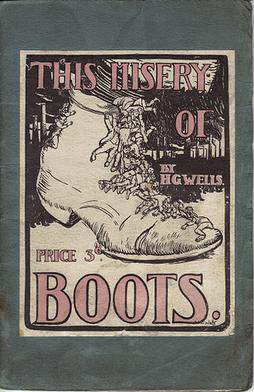
This Misery of Boots is a 1907 political tract by H. G. Wells advocating socialism. Published by the Fabian Society, This Misery of Boots is the expansion of a 1905 essay with the same name. Its five chapters condemn private property in land and means of production and calls for their expropriation by the state "not for profit, but for service."

Select Conversations with an Uncle, published in 1895, was H. G. Wells's first literary publication in book form. It consists of reports of twelve conversations between a fictional witty uncle who has returned to London from South Africa with "a certain affluence," as well as two other conversations.
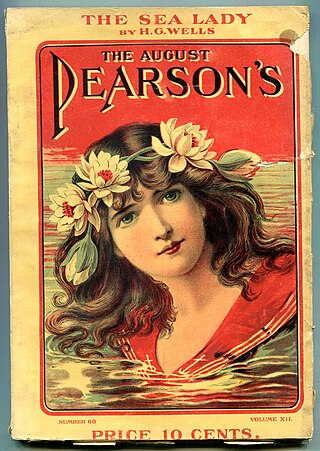
The Sea Lady is a fantasy novel by British writer H. G. Wells, including some of the aspects of a fable. It was serialized from July to December 1901 in Pearson's Magazine before being published as a volume by Methuen. The inspiration for the novel was Wells's glimpse of May Nisbet, the daughter of the Times drama critic, in a bathing suit, when she came to visit at Sandgate, Wells having agreed to pay her school fees after her father's death.
The New Machiavelli is a 1911 novel by H. G. Wells that was serialised in the English Review in 1910. Because its plot notoriously derived from Wells's affair with Amber Reeves and satirised Beatrice and Sidney Webb, it was "the literary scandal of its day."
The Future in America: A Search After Realities is a 1906 travel essay by H. G. Wells recounting his impressions from the first of half a dozen visits he would make to the United States. The book consists of fifteen chapters and a concluding "envoy".
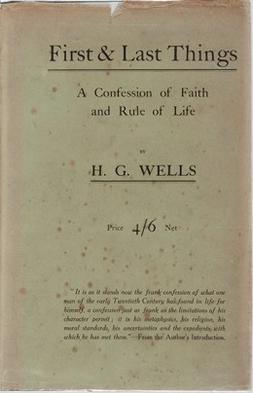
First and Last Things is a 1908 work of philosophy by H. G. Wells setting forth his beliefs in four "books" entitled "Metaphysics," "Of Belief," "Of General Conduct," and "Some Personal Things." Parts of the book were published in the Independent Magazine in July and August 1908. Wells revised the book extensively in 1917, in response to his religious conversion, but later published a further revision in 1929 that restored much of the book to its earlier form. Its main intellectual influences are Darwinism and certain German thinkers Wells had read, such as August Weismann. The pragmatism of William James, who had become a friend of Wells, was also an influence.

The Passionate Friends is a 1913 coming of age novel by H. G. Wells detailing the life and travels of a young man. It is notable as the first introduction of Wells's notion of an "open conspiracy" of individuals to achieve a world state.
The Wife of Sir Isaac Harman is a 1914 novel by H. G. Wells.

An Englishman Looks at the World is a 1914 essay collection by H. G. Wells containing journalistic pieces written between 1909 and 1914. The book consists of twenty-six pieces ranging from five to sixty-two pages in length. An American edition was published the same year by Harper and Brothers under the title Social Forces in England and America.
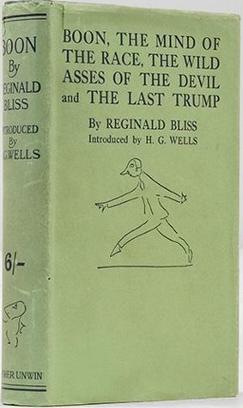
Boon is a 1915 work of literary satire by H. G. Wells. It purports, however, to be by the fictional character Reginald Bliss, and for some time after publication Wells denied authorship. Boon is best known for its part in Wells's debate on the nature of literature with Henry James, who is caricatured in the book. But in Boon Wells also mocks himself, calling into question and ridiculing a notion he held dear—that of humanity's collective consciousness.

The Work, Wealth and Happiness of Mankind by H. G. Wells is the final work of a trilogy of which the first volumes were The Outline of History (1919–1920) and The Science of Life (1929). Wells conceived of the three parts of his trilogy as, respectively, "a survey of history, of the science of life, and of existing conditions." Intended as an unprecedented "picture of all mankind to-day" in all its manifold activities, he called it "the least finished work . . . because it is the most novel." He hoped the volumes would play a role in the open conspiracy to establish a progressive world government that he had been promoting since the mid-1920s.

The Croquet Player is a 1936 novella by H. G. Wells, "a sort of ghost story." It has been called "a short allegory written under the stimulus of the Spanish War."

All Aboard for Ararat is a 1940 allegorical novella by H. G. Wells that tells a modernized version of the story of Noah and the Flood. Wells was 74 when it was published, and it is the last of his utopian writings.

The Holy Terror is a 1939 work by H. G. Wells that is in part an analysis of fascism and in part a utopian novel.

Anticipations of the Reaction of Mechanical and Scientific Progress upon Human Life and Thought, generally known as Anticipations, was written by H.G. Wells at the age of 34. He later called the book, which became a bestseller, "the keystone to the main arch of my work." His most recent biographer, however, calls the volume "both the starting point and the lowest point in Wells's career as a social thinker."
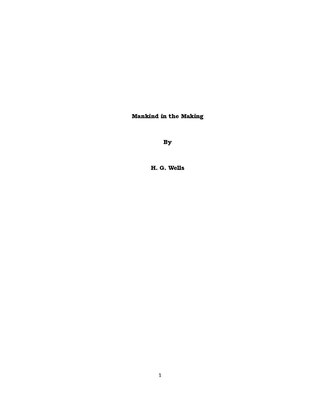
Mankind in the Making (1903) is H.G. Wells's sequel to Anticipations (1901). Mankind in the Making analyzes the "process" of "man's making," i.e. "the great complex of circumstances which mould the vague possibilities of the average child into the reality of the citizen of the modern state." Taking an aggressive tone in criticizing many aspects of contemporary institutions, Wells proposed a doctrine he called "New Republicanism," which "tests all things by their effect upon the evolution of man."

















